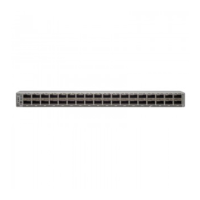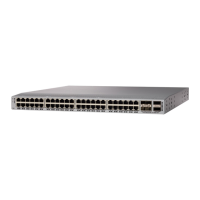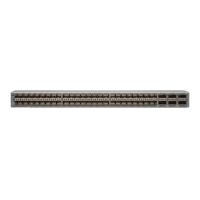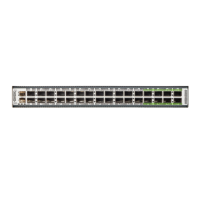•
S = sleeping.
•
T = traced or stopped.
•
Z = defunct (zombie) process.
•
NR = not-running.
•
ER = should be running but currently not-running.
Typically, the ER state designates a process that has been restarted too many times,
causing the system to classify it as faulty and disable it.
Note
switch# show processes ?
cpu Show processes CPU Info
log Show information about process logs
memory Show processes Memory Info
switch# show processes
PID State PC Start_cnt TTY Type Process
----- ----- -------- ----------- ---- ---- -------------
1 S b7f9e468 1 - O init
2 S 0 1 - O migration/0
3 S 0 1 - O ksoftirqd/0
4 S 0 1 - O desched/0
5 S 0 1 - O migration/1
6 S 0 1 - O ksoftirqd/1
7 S 0 1 - O desched/1
8 S 0 1 - O events/0
9 S 0 1 - O events/1
10 S 0 1 - O khelper
15 S 0 1 - O kthread
24 S 0 1 - O kacpid
103 S 0 1 - O kblockd/0
104 S 0 1 - O kblockd/1
117 S 0 1 - O khubd
184 S 0 1 - O pdflush
185 S 0 1 - O pdflush
187 S 0 1 - O aio/0
188 S 0 1 - O aio/1
189 S 0 1 - O SerrLogKthread
...
Using the show processes cpu Command
Use the show processes cpu command to display CPU utilization. The command output includes the following:
•
Runtime(ms) = CPU time that the process has used, expressed in milliseconds.
•
Invoked = Number of times that the process has been invoked.
•
uSecs = Average CPU time, in microseconds, for each process invocation.
•
1Sec = Percentage of CPU utilization for the last 1 second.
switch# show processes cpu
PID Runtime(ms) Invoked uSecs 1Sec Process
----- ----------- -------- ----- ----- -----------
1 2264 108252 20 0 init
2 950 211341 4 0 migration/0
3 1154 32833341 0 0 ksoftirqd/0
4 609 419568 1 0 desched/0
Cisco Nexus 9000 Series NX-OS Troubleshooting Guide, Release 7.x
99
Troubleshooting Tools and Methodology
Using the show processes cpu Command
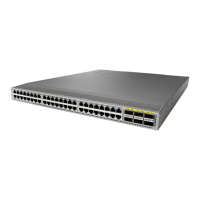
